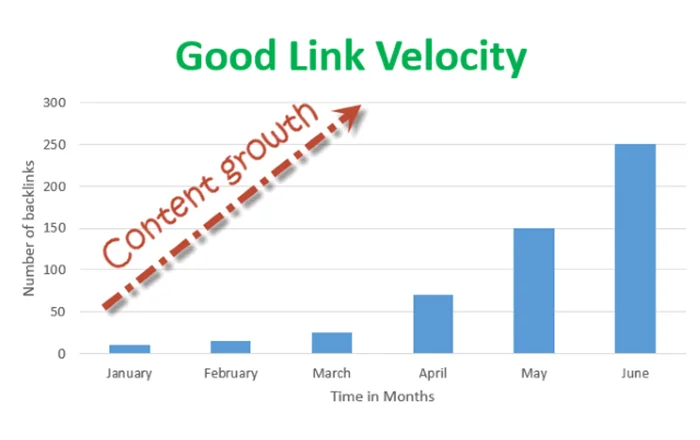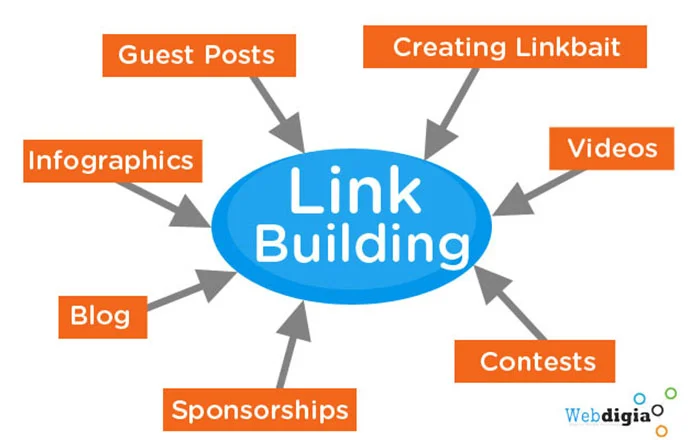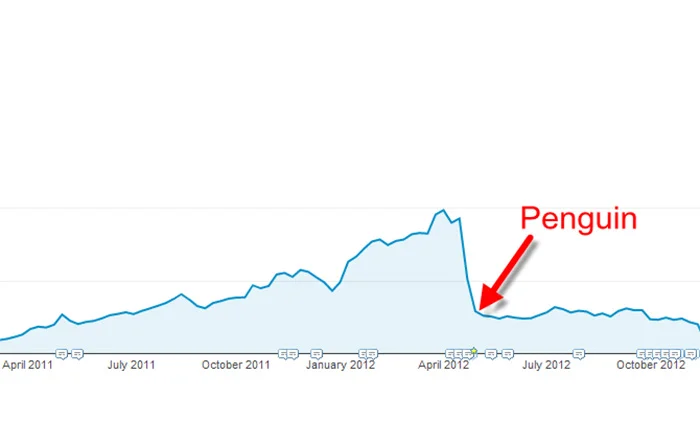12 Debunked Link Building Myths Sabotaging Your Campaign

The importance of effective link-building for SEO campaigns is undeniable. Unfortunately, misconceptions can have a seriously negative impact on the success and sustainability of building links.
The aim of this blog is to dispel these myths in order to ensure successful strategies that consider all relevant factors and align with Google's current approach. We will demonstrate how essential it is to develop holistic, evidence-based approaches when implementing linking opportunities into your Search Engine Optimization strategy successfully.
Myth 1: High Link Velocity Contributes to Manual Penalties

Link velocity is a measurement of how fast links are acquired, evaluated by changes in number and quality.
Despite its countless practical applications, link velocity has suffered from misconceptions over the years—most of which stem from false correlations linking high-velocity approaches to positive or negative search engine rankings.
People made assumptions indicating that these techniques were either taking down whole sites or boosting them to the top quickly; neither of which proved true after closer examination.
Debunking the idea of automatic penalties with high link velocity
Link velocity (the speed at which links are acquired for a website) is widely considered an important ranking factor; however, many marketers mistakenly believe that having too high of a velocity will result in manual link penalties from search engine algorithms.
This belief fails to recognize the fact reinforced by Google - that manual penalties focused on backlink profiles should be applied when website owners have deliberately generated bad faith or spammy links (which may have tanked your rankings in recent Google spam updates).
Emphasizing the significance of natural links growth patterns
Building an organic link profile is an important part of link building strategies. Having a natural growth pattern (excluding paid links) with more links indicates the high quality and relevancy of the content while keeping manual penalties away.
A slow and consistent approach needs to be adopted when it comes to tracking growth in the strong behind links currently associated with any website or page.
Myth 2: Guest Posting Negatively Contributes to Link Building

Guest posting can play an integral role in any successful link-building campaign. Quality blog posts on relevant industry publications provide incredibly valuable for brand visibility, increased domain authority, and authoritative backlinks for search engine optimization benefit.
However, it is important to keep in mind the importance of link relevance and author credentials to ensure a natural link profile - what Google considers desirable.
Addressing concerns about guest posting's impact on SEO
Addressing concerns about guest posting's impact on SEO starts by recognizing that properly executed guest posts can both boost backlink diversity and strengthen brand recognition.
Adjusting the common practice of using peer sites solely for link acquisition purposes towards emphasizing producing quality content not only alleviates any worries about penalties but also drastically improves results in terms of increased engagement, target audience loyalty, improved ranking visibility, referral traffic buildup, or long-term lead generation.
Correct approach to utilize guest posting for effective link building
If a connection can be formed between your website content and the linked publication, it will bring in more authority to your campaign.
On top of this, outreach should be done using courtesy as making respectful references of the website or blog editors and approaching them with well-thought requests increase acceptance rate.
Relevancy should be assessed in terms of severity for compliance with both Google guidelines and editorial standards applicable on platform you are targeting.
Myth 3: Link Building Is All About Links

Link building involves much more than simply generating high numbers of links. Creating a successful SEO campaign, requires expanding the definition to include considering other factors regarding the type and quality of internal links over quantity.
Link building needs to take into account relevance and context; creating diverse inbound pathways from a variety of creative mediums rather than just URLs; analyzing search result competition against multiple parameters; and conducting competitor backlink analysis for insights deep into an industry’s link behavior.
Knowing key information about individual pages' purpose, authority, credibility, and usability also weighs heavily on effective link building strategies.
Significance of relevance and context in link acquisition
Link building strategy no longer solely approaches link quantity anymore as Google's algorithms place successful emphasis on both relevance and context surrounding any backlink acquired.
Relevance of the linking domain measured against that of the root domain of the website can lend credibility to said source, while precise topics and keywords spanning between two sites attract high-quality links that would be most meaningful for readers.
Moreover, content freshness and topical alignment towards what users search amplifies success in modern SEO ventures. Thus the general significance of relevance and context across multiple parameters are essential criteria when aiming for organic growth on a website's rankings.
Myth 4: Backlinks Are a ‘Top’ Google Ranking Factor
Backlinks have seen a major evolution since Google’s first birth in 1996. While high-quality backlinks used to heavily determine the page rank or SERP, this has changed rather drastically today.
Backlinks were always important for ranking success although their relevance decreased when new algorithms and techniques were introduced, such as Semantic Search SEO and Rankbrain. google is primarily switching away from using backlinks and link networks as an inbound indicator of remarkable content these days, with relevance getting more attention than ever before.
While valuable links are still a big part of holistic SEO, their importance does not surpass other factors like topic relevancy as well as user-rater metrics and technology advancements on the site level.
Highlighting other critical ranking factors like content quality and UX
Other important ranking factors such as content quality and user experience must be taken into account when creating an effective SEO strategy. Quality content should always trump quantity.
Furthermore, the content generated should be tailored to target customer needs, questions, or complaints in order to engage with an audience. The same holds true for user experience. Websites must load quickly in order to entice a visitor and provide them with something of value that will make them stay, and become regular visitors or buyers.
All these elements certainly affect all the links you have generated - good or bad! Creating an effective online Brand presence requires both correct link building efforts along with investing time in understanding other key ranking indicators including great content and UX.
Myth 5: The Penguin Penalty

The Google Penguin algorithm update was originally released in April of 2012. It targeted link schemes that had become commonplace internet practices - penalizing websites that were using overly-aggressive digital marketing techniques and spammy backlinking tactics to manipulate their ranking.
The outbreak of penalties made it apparent that the days of buying links, implementing automated link campaigns, or partaking in blog networks with questionable authenticity were no longer a viable SEO strategy.
By extension, the consequences encouraged webmasters to prioritize natural website promotion through authentic, meaningful content instead; emphasizing quality above quantity for links.
Dispelling the concept of an ongoing "Penguin penalty"
One of the most common misconceptions surrounding link building is that there’s an ongoing "Penguin penalty" for websites that acquire too many low-quality backlinks at once. In reality, this punitive system has been obsolete ever since Google stopped drawing with the strict lines imposed by its now-dated Penguin algorithm rollout in 2012.
Instead, we find that link quality is more accurately determined using other metrics such as relevance and context – making it easier than ever to grow healthy links instead of risking any possible penalties related to spammy methods.
Myth 6: AI-Generated Links Will Replace Manual Outreach
With the rise of AI, some marketers believe tools can fully automate link acquisition — from generating outreach emails to creating content that “earns” links without human oversight.
The truth: AI can help with efficiency (personalizing outreach, analyzing backlink gaps, drafting pitches), but relationships and editorial trust still drive high-quality placements. Editors and webmasters can spot spammy, mass-produced AI content a mile away, and Google is doubling down on detecting inauthentic link patterns.
Myth 7: Link Building Is Becoming Obsolete Because of AI Search (SGE)
Some argue that as Google integrates AI-generated results (SGE), links won’t matter because users may not click through to websites as often.
The truth: While AI-driven SERPs may change traffic flow, Google and ChatGPT still rely heavily on links in generating AI search results to determine authority and source credibility. Even if click-through rates shift, a strong link profile will remain a ranking signal and a trust signal for both Google and AI-driven assistants.
In fact, brand mentions are outpacing link building as the next wave in AI search optimization.
Myth 8: Only Do-Follow Links Matter
Marketers sometimes dismiss nofollow, sponsored, or UGC links as “worthless.”
The truth: These links can still drive referral traffic, diversify your link profile, and in some cases (as with high-authority publications) indirectly support rankings. Google has moved toward treating these attributes as “hints” rather than strict directives. A natural profile has a healthy mix.
Myth 9: Anchor Text Must Always Be Keyword-Rich
The old-school tactic of stuffing exact-match anchors into every backlink is still alive in some corners of SEO.
The truth: Over-optimized anchors are a bigger red flag today than under-optimized ones. Google rewards branded, contextual, and natural anchors. In fact, too much keyword-rich anchor text can do more harm than good.
Myth 10: Social Media Links Don’t Help SEO
Because social links are usually nofollow, many dismiss them as useless.
The truth: While they don’t directly boost rankings, social shares amplify reach, visibility, and chances of earning organic backlinks from journalists, bloggers, or industry sites who discover your content via social channels.
Myth 11: AI Content Will Never Earn Links
There’s a growing belief that AI-generated content cannot attract backlinks.
The truth: Low-quality, mass-spun AI content won’t — but AI-assisted content that’s enhanced with unique insights, data, or expert commentary can still become highly linkable. It’s not about the tool, it’s about the value. When relevant websites produce relevant content, there is still the potential for growth.
Myth 12: Nofollow Links Are Worthless
One of the longest-running misconceptions in SEO is that nofollow links have no value because they don’t directly pass PageRank. Many marketers ignore them completely, assuming they don’t contribute to rankings or authority.
The truth: While nofollow links may not carry the same “link juice” (aka link equity) as dofollow links, they play a critical role in a natural backlink profile. Google now treats nofollow, sponsored, and UGC attributes as hints rather than hard directives, meaning they can still influence crawling, discovery, and context signals.
Beyond algorithms, nofollow links can generate tangible SEO benefits through referral traffic, brand visibility, and secondary link opportunities. For example, a nofollow link in a high-authority news site might drive real visitors to your content, some of whom could later cite your work with dofollow links.
The takeaway: A healthy link-building strategy embraces diversity. A backlink profile made up exclusively of dofollow links looks artificial, while a mix of dofollow, nofollow, and branded citations mirrors how authority naturally develops across the web.
Google's current approach to link quality evaluation and penalties
Google’s contemporary approach to link quality evaluation is two-fold: an authentic and transparent focus on delivering high value for users, paired with proactive monitoring of scale or velocity attempts outside the natural scope of organic growth.
This focuses not only on assessing overall page context, connection relevance, and authority of source content but also disincentives automated link-building practices as part of an effort the eliminate placement produced through unnatural or manipulative means. Penalties in these cases occur when Google can identify activity indicative of a punitive attempt – most often via a major increase in rate over time compared to relative norms.
Evidence-based link building practices
Link building strategy is a complex and integral part of modern SEO campaigns. Misconceptions can quickly derail successful tactics if not properly identified and revealed for what they are - myths. To become effective at link building, we must stay informed of current algorithm updates as well as engage in researched practices.
By adhering to the evidence-based approaches that embrace content quality, context, relevance, outreach strategies, and natural link velocity growth - organic selection by search engines measure success accurately both for humans and bots alike.
Ready to get started building links with professional link builders at Link.Build.
Contact us today!


.svg)

.jpg)
.jpg)
.jpg)